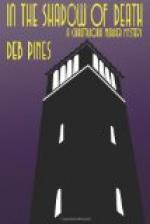In regard to the blockhouse system, we need only make these general remarks. The blockhouses along the railway and fighting lines of the British, as well as in and round garrisoned places, played a most prominent part in bringing the war to an end. It was at all times difficult and dangerous to attack them; and to force their occupants to surrender involved greater loss of life on our part than we could prudently face. The only way we could destroy them was to approach them as near as possible during the night, and locate a dynamite bomb on or near them. In this way some of them have been blown up. It seems a barbarous process, but is not war, at its very best, barbarous, brutal, and unbefitting civilized nations?
As a means of capturing the burghers, they were a failure. Our commandoes, when driven against them, always had sufficient pluck and courage to cut the wires between them, and so they crossed the lines at almost any point they pleased. That we have crossed and recrossed them frequently is proof enough that they were, in this respect, not a success. The barbed wire fences, however complicated, were easily cut.
As a means of capturing the women and children, and especially the cattle, sheep and horses, they served the purpose well. It was almost impossible to drive a flock of sheep or a herd of cattle, not to mention horses, over these lines during the day. The women with the old and aged would retreat with the cattle and sheep until they came in touch with the blockhouses, and were then often captured, one and all.
If it had not been for these little shanties all over the two republics, it would have taken the British forces double if not treble the time to have so thoroughly exhausted the late republics of food supplies. When the republics were cut up into so many small sections it became impossible to protect our foodstuffs.
From the railway line we went to Rouxville district, where we enjoyed a rest of ten days. But on the 1st of September the enemy came in large numbers and till the 22nd of October harassed us almost daily.
As I was anxious to return to the commandoes I left behind in the Cape Colony, I thought it feasible to cross the fighting line, and take my commando to Ladybrand district, where the enemy would probably leave us unmolested for a while, and where the veldt provided ample food for our horses. Thither we directed our steps, and for a month we saw no signs of the British.
On the 23rd of November we were again south of the Bloemfontein-Ladybrand fighting line, and on our way to the Cape Colony. My first intention was to ford the Orange River near Aliwal North, but I soon realised that we would be incurring too great a risk in trying to cross the river there, for about twenty or twenty-five columns were then sweeping the southern districts of the Orange Free State. Now if the river was in flood these columns could press us against it, and we would then be in an awful predicament. So I resolved to cut the wire of the main line near Springfontein Junction, and from there march in the direction of Zanddrift, west of Philippolis.




